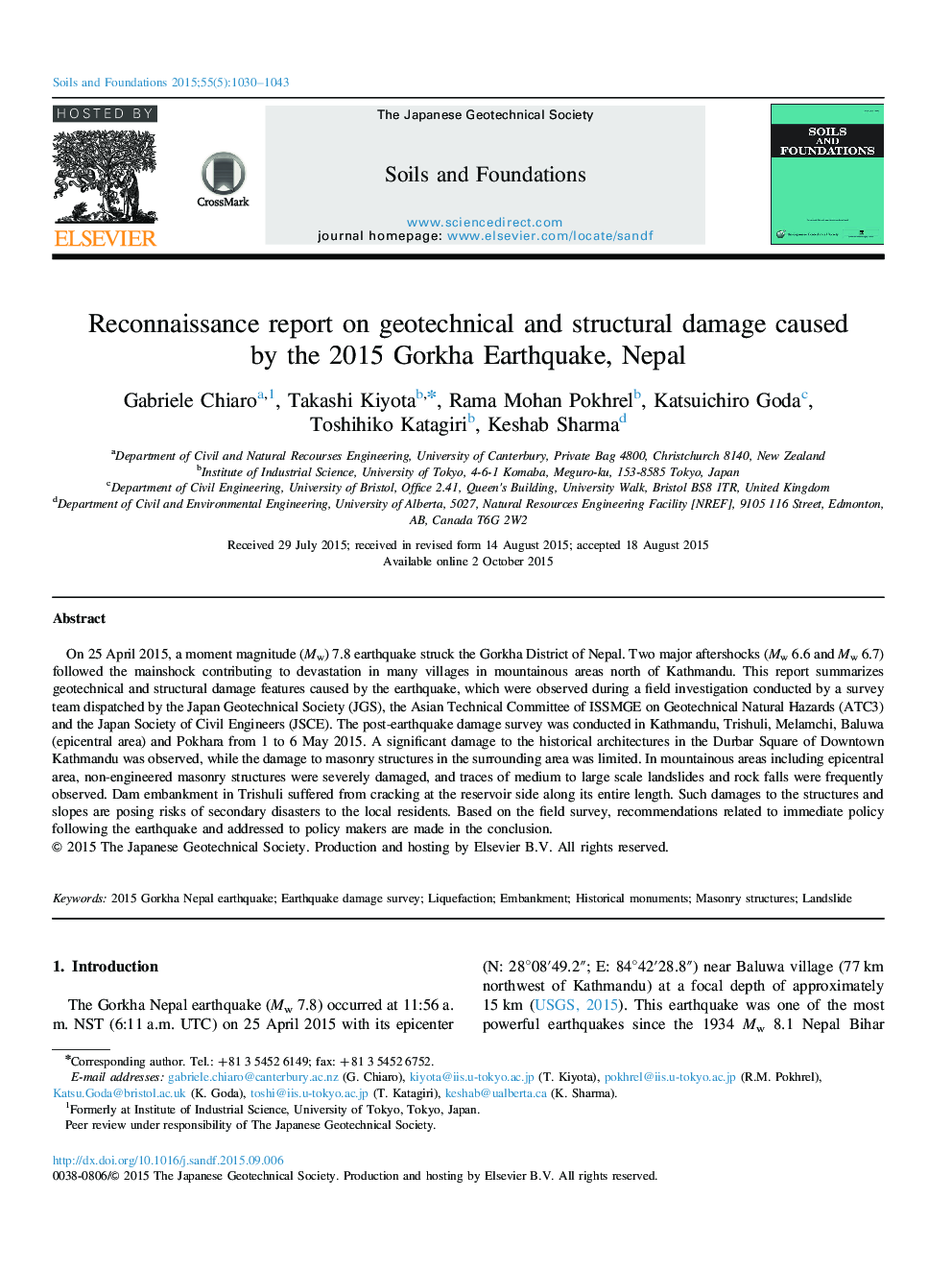| Article ID | Journal | Published Year | Pages | File Type |
|---|---|---|---|---|
| 307086 | Soils and Foundations | 2015 | 14 Pages |
On 25 April 2015, a moment magnitude (Mw) 7.8 earthquake struck the Gorkha District of Nepal. Two major aftershocks (Mw 6.6 and Mw 6.7) followed the mainshock contributing to devastation in many villages in mountainous areas north of Kathmandu. This report summarizes geotechnical and structural damage features caused by the earthquake, which were observed during a field investigation conducted by a survey team dispatched by the Japan Geotechnical Society (JGS), the Asian Technical Committee of ISSMGE on Geotechnical Natural Hazards (ATC3) and the Japan Society of Civil Engineers (JSCE). The post-earthquake damage survey was conducted in Kathmandu, Trishuli, Melamchi, Baluwa (epicentral area) and Pokhara from 1 to 6 May 2015. A significant damage to the historical architectures in the Durbar Square of Downtown Kathmandu was observed, while the damage to masonry structures in the surrounding area was limited. In mountainous areas including epicentral area, non-engineered masonry structures were severely damaged, and traces of medium to large scale landslides and rock falls were frequently observed. Dam embankment in Trishuli suffered from cracking at the reservoir side along its entire length. Such damages to the structures and slopes are posing risks of secondary disasters to the local residents. Based on the field survey, recommendations related to immediate policy following the earthquake and addressed to policy makers are made in the conclusion.
